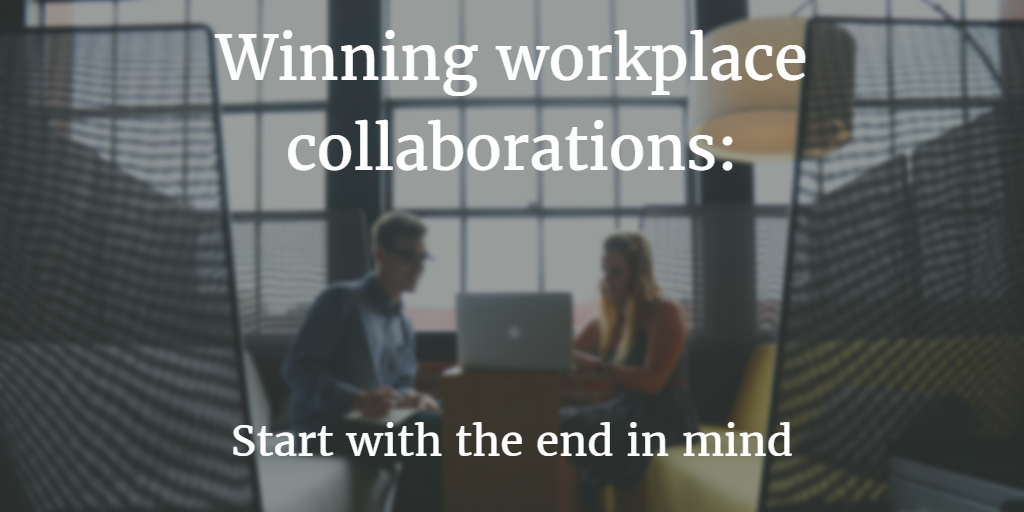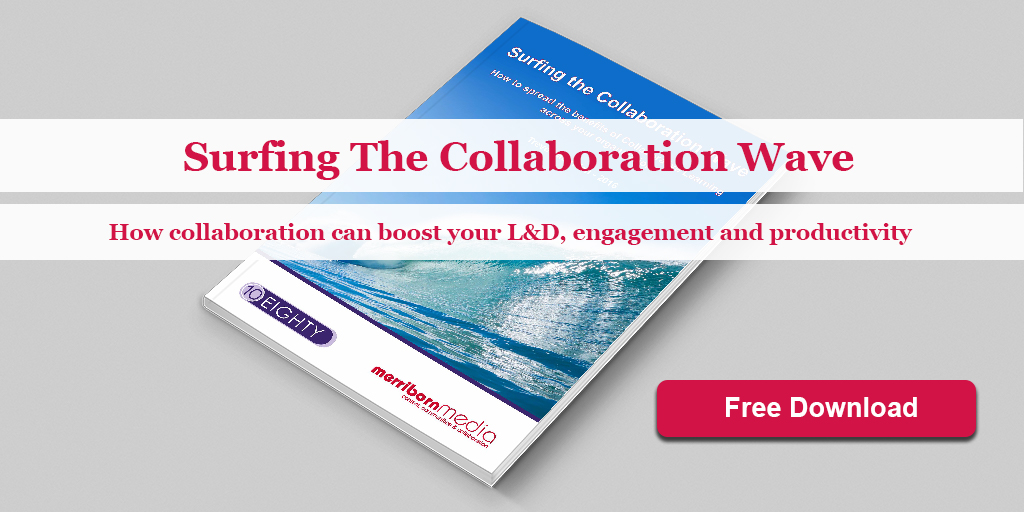Winning workplace collaborations: start with the end in mind
There’s an excellent report just out – “Guidance for Collaborative Working” just out from the Centre for Effective Dispute Resolution. – that provides great advice on how best to make workplace collaborations more effective.
The report makes the important point that the word “collaboration” is very much over-used or misapplied. For example, technology solutions are often referred to of themselves as being ‘collaborative’ yet technology, on its own, can’t bring success to collaboration, even if it can make it easier to achieve. This in turn makes it harder to understand when collaboration can – and cannot – work.
Everyone instinctively “gets” collaboration – but many don’t really know how to talk about it with real business value in a workplace context. This is why we worked recently with 10Eighty to engage 100 leading HR and L&D practitioners to understand how businesses can harness collaborative working.
It quickly became clear there two camps of understanding- those who thought about collaborative working either in terms of the business benefits it could bring; or simply as a process through which work was organised.
Among those thinking mainly of the business benefits we found:
a) Over 7/10 (72%) said they thought of collaborative working as a way to bring together a broad range of talents to a project or task;
b) More than 6/10 (62%) said they considered it as a means to break down silos in an organisation;
c) A third of those who replied (37%) saw it as working in ways that “unleash energy” in an organisation;
Among those thinking mostly about collaborative working more as a process:
- Over half (55%) believed the collaborative working simply meant working on projects or tasks in close physical proximity to one another;
- A significant minority of over 4/10 (43%) believed that collaborative working effectively meant “making decisions by consensus”.
It’s heartening to see that both CEDR and we both believe that collaboration, when explained simply as a process with no clear line of sight to the business benefits, leads to confusion rather than clarity. One leading blue-chip HR director put it superbly well in our recent report: “When creating a debate around collaboration in your organisation, start with the end in mind. Those who successfully introduce more collaborative forms of working into their organisation do so by first understanding and then explaining its benefits to other stakeholders, rather than attempting to “sell” the detail of the process too soon to their colleagues.”
Merriborn Media is a business dedicated to developing clever content, engaged online communities and effective collaborative working and learning for clients. Both Merriborn Media and its founder Trevor Merriden were ranked in the Top 3 of social learning evangelists for 2016 in a recent major study.
Merriborn Media is a business dedicated to developing clever content, engaged online communities and effective collaborative working and learning for clients. Both Merriborn Media and its founder Trevor Merriden were ranked in the Top 3 of social learning evangelists for 2016 in a recent major study.


